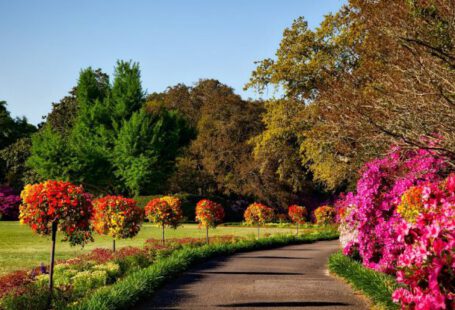Landscaping is an art form that allows individuals to transform their outdoor spaces into beautiful and functional areas. One essential element of landscaping is ground cover, which not only adds visual interest but also helps to prevent soil erosion and suppress weed growth. With a wide variety of ground cover options available, choosing the best one for your specific needs can be a daunting task. In this article, we will explore some of the best ground covers for landscaping that can enhance the beauty of your outdoor space while also providing practical benefits.
Benefits of Ground Covers
Ground covers offer numerous benefits for landscaping projects. They help to create a cohesive look by filling in bare areas and providing a uniform appearance. Ground covers also help to conserve moisture in the soil, reduce erosion caused by wind and water, and suppress weed growth, thereby reducing the need for chemical herbicides. Additionally, ground covers can serve as a natural mulch, insulating the soil and protecting plant roots from extreme temperatures.
Perennial Ground Covers
Perennial ground covers are a popular choice for landscaping due to their longevity and low maintenance requirements. Some of the best perennial ground covers include creeping thyme, which forms a dense mat of fragrant foliage and small flowers, and creeping phlox, which produces a profusion of colorful blooms in the spring. Another excellent perennial ground cover option is sedum, which is known for its succulent leaves and ability to thrive in dry, sunny conditions.
Evergreen Ground Covers
Evergreen ground covers are an excellent choice for adding year-round interest to your landscaping. These plants maintain their foliage throughout the year, providing color and texture even in the winter months. Some of the best evergreen ground covers include vinca minor, also known as periwinkle, which features glossy green leaves and delicate blue flowers, and pachysandra, a shade-loving plant with dark green leaves that form a dense carpet.
Low-Maintenance Ground Covers
If you are looking for ground covers that require minimal upkeep, there are several options to consider. One popular low-maintenance ground cover is creeping juniper, a drought-tolerant plant with blue-green foliage that spreads quickly to cover large areas. Another low-maintenance option is ice plant, which produces vibrant flowers in shades of pink, purple, and yellow and requires little water once established. For sunny areas, consider using moss rose, a heat-tolerant ground cover that blooms continuously throughout the summer.
Ground Covers for Shade
Shady areas can present a challenge when selecting ground covers, as many plants require sunlight to thrive. However, there are several ground covers that are well-suited to shady conditions. One of the best options for shade is sweet woodruff, a low-growing plant with fragrant white flowers that thrives in moist, shady areas. Another shade-loving ground cover is barrenwort, which features heart-shaped leaves and delicate flowers in shades of pink, white, and yellow.
Conclusion: Choosing the Right Ground Cover for Your Landscape
When selecting ground covers for your landscaping project, it is essential to consider factors such as sunlight exposure, soil type, and maintenance requirements. By choosing the right ground cover for your specific needs, you can create a beautiful and functional outdoor space that will thrive for years to come. Whether you opt for perennial, evergreen, low-maintenance, or shade-loving ground covers, incorporating these plants into your landscape design can enhance the overall aesthetic and health of your outdoor environment.




